The laptop market these days is full of awesome machines that blend power and battery life into a coherent package. Displays are no longer second-class to desktop monitors, and typing on most is a pleasant experience. One feature that's still fairly uncommon outside business-class laptops, though, is 4G connectivity. While it’s more useful on Chromebooks, 4G LTE can keep you connected and able to work from wherever a cellular signal can be found.
Whether you're working from a cafe, on a train, or anywhere else, can be liberating with 4G connectivity. No more having to find public Wi-Fi, which is not only unstable but is rife with security issues. You could even work while camping or while on the beach, truly living your best life in the new remote working economy. The flip side is that adding 4G connectivity isn’t cheap, so the extra mobility needs to be added to the overall budget when buying a new laptop. That said, cellular connectivity is getting more affordable, so you should be able to find something to suit your needs.
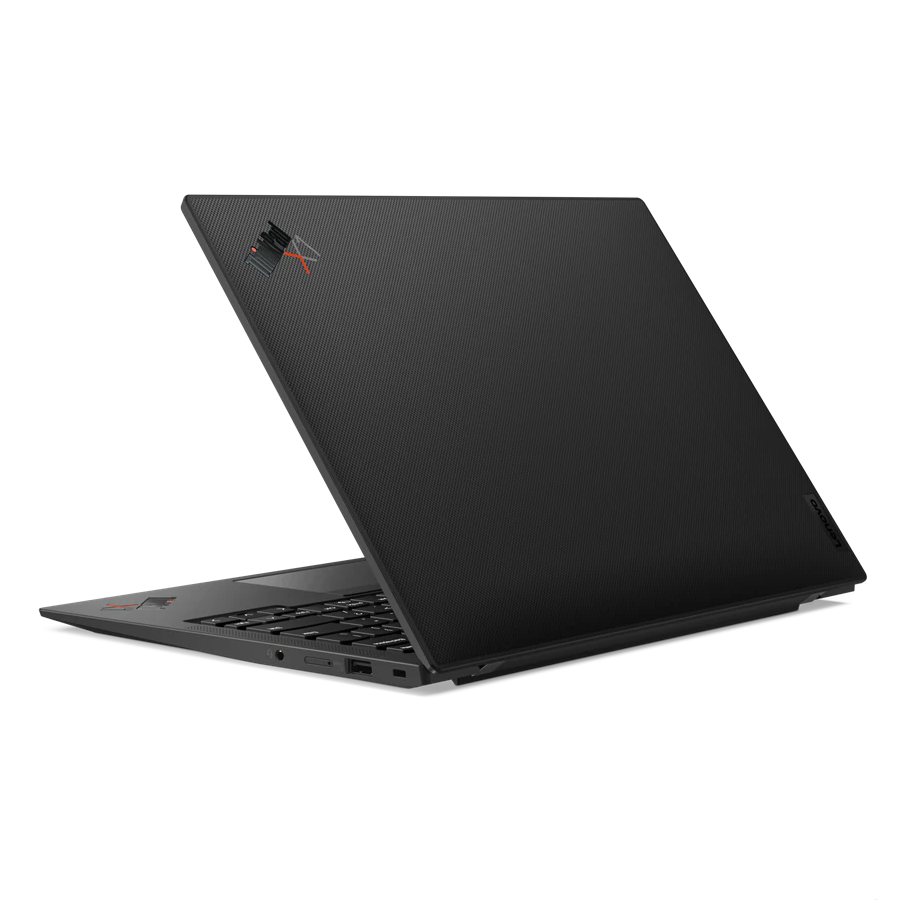
Lenovo ThinkPad X1 Carbon Gen 11
Works as hard as you do
The Lenovo ThinkPad X1 Carbon Gen 11 is a thin, light, and powerful business laptop with optional 4G and 5G connectivity. It's made from tough, durable materials, has a great webcam, and is a joy to type on.
- Highly configurable
- OLED screen option
- Classic ThinkPad style
- TrackPoint might not be to your taste
- Gets expensive when upgraded
Cellular connectivity is still more common on business laptops, and the Lenovo ThinkPad X1 Carbon Gen 11 is one of the best. It’s one of the longest-running business lines, and somehow, the company manages to improve it every generation.
For 2023, most of the upgrades happened on the inside. The processor choices are now from 13th-generation Intel Core CPUs, from either the efficient U-series or the more powerful P-series. You can get up to 64GB of LPDDR5x RAM, which is more than you’ll likely need in everyday use, and up to 2TB of PCIe 4.0 SSD. The battery life is improved thanks to the more efficient processors, with our tester regularly getting through most of the workday before reaching for the charger.
Lenovo offers five 14-inch display options for the ThinkPad X1 Carbon Gen 11, with the most affordable being an FHD+(1920x1200) resolution IPS panel with 400 nits of brightness, an anti-glare finish, and optional touch. Another increases brightness to 500 nits and adds ThinkPad’s Privacy Guard coating. Then there’s a 2.2K (2240x1400) IPS panel with 300 nits of brightness and, finally, a 2.8K (2880x1800) OLED with 500 nits of brightness, an anti-reflection finish, and DisplayHDR True Black 500. If you use your laptop for anything other than work, this is the screen to get.
The FHD+ webcam is great and has IR for Windows Hello security, and you get quad speakers (with Dolby Atmos) and quad microphones (with Dolby Voice). Ports are well provisioned, with two Thunderbolt 4, two USB-A 3.2 Gen 1, HDMI 2.0b, and a 3.5mm audio port. And it has optional WWAN for 4G LTE or 5G, rounding out the complete package.
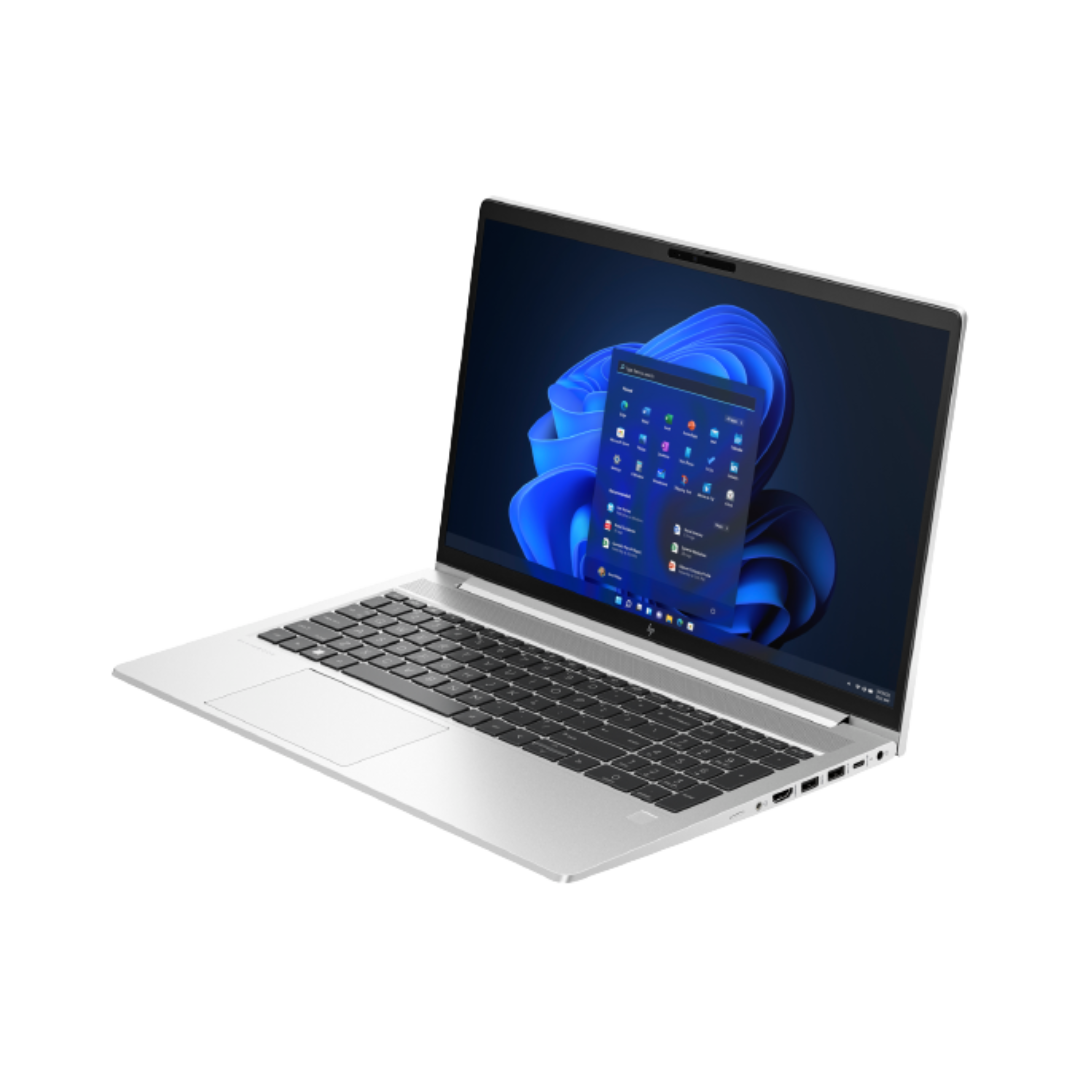
HP EliteBook 655 G10
Plenty of graphical power
The HP EliteBook 655 G10 is an affordable business laptop with AMD Ryzen 7000-series processors and optional LTE.
- Affordable
- Fast AMD Ryzen 7000 series processors
- Lots of configuration options
- No premium display options available
- Base webcam is 720p
You typically have to pay a premium to get 4G LTE connectivity on your laptop, so our "best value" pick isn't the cheapest. However, with discounts that sometimes put it under $800, you can get 4G on the cheap with the HP EliteBook 655 G10.
Most laptops with cellular connectivity are powered by Intel or Qualcomm processors. Not so with this choice. It’s a business laptop powered by the latest AMD Ryzen 7000-series and Ryzen Pro 7000-series processors. The new APUs combine Zen 3 cores and Radeon graphics for plenty of productivity power. You can get up to an AMD Ryzen Pro 7730U, an 8-core, 16-thread processor with up to 4.5GHz boost speeds. This is a 15W TDP processor, which sips power. The processor also has AMD Radeon (Vega 8) graphics, so it’s slightly more capable than most integrated graphics solutions. Alongside that, you can get up to 64GB of DDR4-3200 RAM and up to 2TB of PCIe 4 SSD storage.
The 15.6-inch display is FHD (1920x1080), with anti-glare coating and 250 nits of brightness, with the base model unfortunately only coming with a 720p webcam. All five screen options have the same resolution, and if you want WWAN for 4G LTE, you are limited to a panel with 250 nits brightness and either an HD or HD + IR webcam. There’s an optional touchscreen and an option with a 5MP webcam, 400 nits of brightness, and low blue light certification.
This isn’t a thin and light laptop, at 0.78 inches thick and 3.9 pounds. That’s to be expected for the screen size, but it does mean a fairly robust set of ports. It has one USB-C 3.2 Gen 2 port with Power Delivery and DP alt mode, HDMI 2.1, a 3.5mm audio jack, and a 1GbE RJ45 port. And let us not forget the optional WWAN, powered by the Intel XMM 7560 LTE Advanced Pro modem.
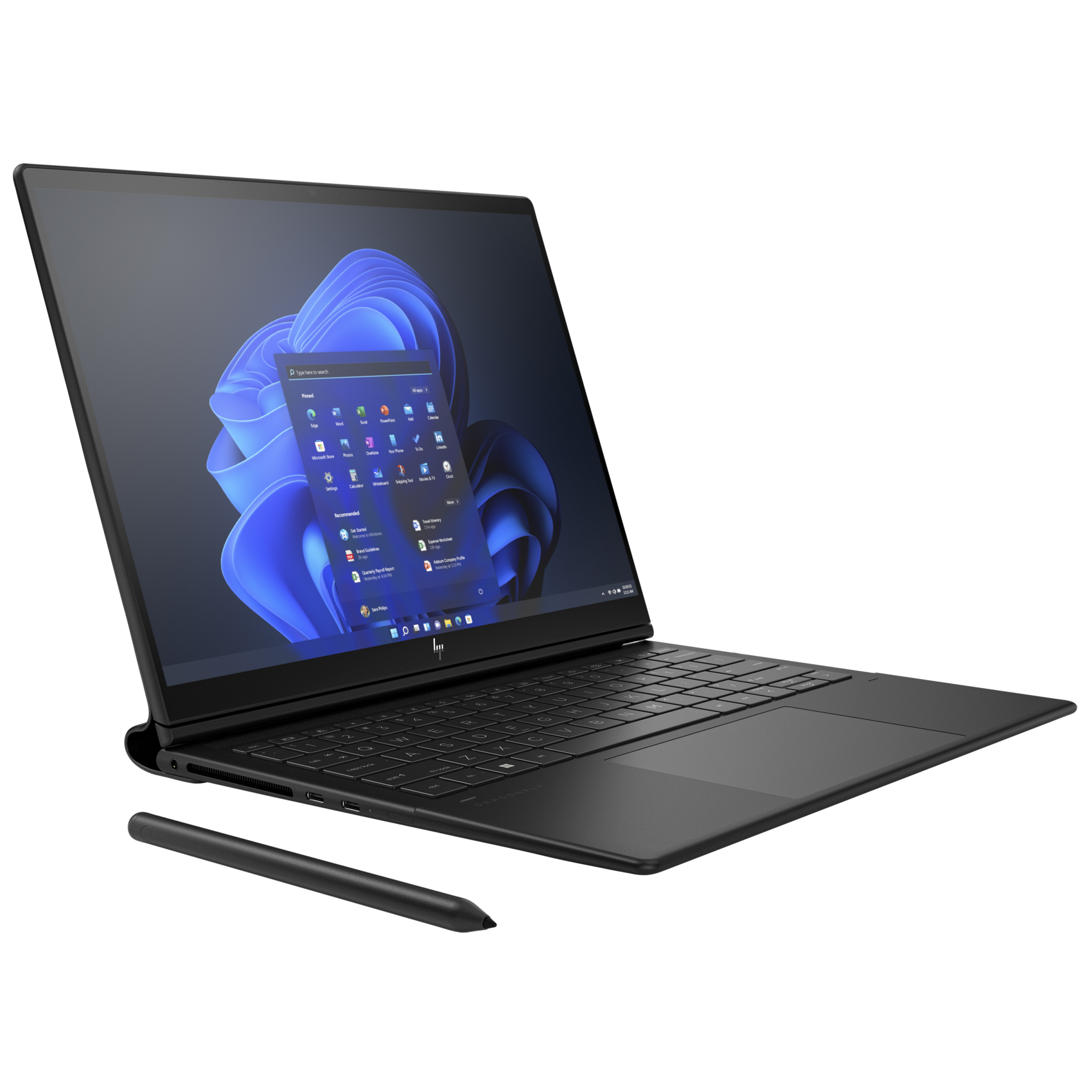
HP Dragonfly Folio G3
Work your way, from anywhere
The HP Dragonfly Folio has a unique convertible form factor and high-end specs, making it one of the best laptops on the market. It's expensive, but it may be worth it for its versatility.
- Unique convertible design with premium materials
- One of the best webcams on any laptop
- Tall 3:2 display with an OLED configuration option
- Very expensive, especially for built-to-order configurations
- Not a lot of ports
For something a little more modern-looking than a ThinkPad, the HP Dragonfly Folio is striking and versatile. The premium pull-forward design makes it easier to use the touchscreen or a stylus, and it’s got the power needed for heavy multitasking or photo editing. HP hasn’t updated this to the latest Intel Core processors yet, so you get a choice of 12th-generation Intel Core CPUs, up to an i7-1265U vPro. All have Intel Iris Xe integrated graphics and the choice between 16GB or 32GB of LPDDR5-5200MHz RAM. This is soldered on, so you can’t install more after ordering. You can also get up to 1TB of PCIe 4.0 SSD, but this isn’t upgradable afterward.
The 13.5-inch screen has a 3:2 aspect ratio, which is a more sensible design for business users wanting to use the included Active pen. There are three FHD+(1920x1280) IPS options — glossy or anti-glare with 400 nits of brightness — and a glossy option with Sure View privacy screen with 1,000 nits of brightness. If you like working outdoors or in busy surroundings, that last option is the one to go for. Then, there’s a 3K2K (3000x2000) OLED with 400 nits of brightness and a glossy coating. The webcam on all of these options is 8MP, which is one of the best on any laptop on the market.
The 3.09-pound weight and 17.78-inch thickness make this a portable powerhouse, especially when specced with 4G LTE or 5G. The downside is you only get two Thunderbolt 4 ports and one 3.5mm audio jack. With needing one port to charge, you’ll carry dongles around or wait until you get home to tether to a dock. It's also very expensive, but you're paying for the versatility and stylish design.
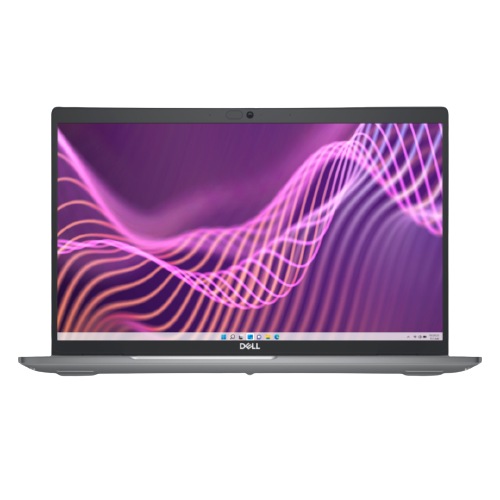
Dell Latitude 15 5440
If you need a larger screen
The Dell Latitude 5440 is a solid business laptop. This year's model features the latest 13th-generation Intel P-series or U-series CPUs, a new Nvidia MX graphics option, 4G or 5G connectivity, and optional DDR5 RAM.
- Lots of ports and connectivity options
- Display size may be ideal for some users
- Nvidia graphics option on some CPU choices
- Lower vertical space than 3:2 or 16:10 alternatives
- Gets expensive with add-ons
The portability that 4G cellular connectivity affords means most laptops with it are on the smaller side. However, sometimes you just want a larger display to get work done, and this Dell Latitude 15 5440 fits the bill. It’s a solid business laptop, with optional Nvidia graphics on some models and a choice of 4G LTE or 5G connectivity.
This laptop will handle any of the tasks expected of a business-class machine. It comes with Intel’s 13th-generation processors, with your choice of U-series and P-series chips. Unlike some Latitude models, this one can have WWAN on either series of CPUs so that you can get up to an Intel Core i7-1355U with 10-cores and 12-threads and 5.0GHz turbo boost speeds or an Intel Core i7-1370P with vPro, 14-cores, and 20-threads, that boosts up to 5.20GHz in turbo. Both options are fast, but the U-series chips are more power-efficient, which we recommend for most users. All CPU options have Intel Iris Xe graphics, with the P-series having an optional Nvidia GeForce MX550 discrete graphics chip. The U-series chips come with up to 64GB of DDR4, and the P-series option has up to 64GB of DDR5.
The 15.6-inch display is FHD(1920x1080) with optional touch and 250 nits of brightness. This is the display option if you want 4G LTE. There’s also an option with 400 nits of brightness which is required for 5G connectivity. Webcam options are all FHD(1080p), with some coming with IR for Windows Hello use.
As you might expect from a thicker business laptop, you get a full complement of ports. Dell has added two USB-C Thunderbolt 4 ports with Power Delivery and DP alt mode, two USB-A 3.2 Gen 1 ports, HDMI 2.0, 1GbE Ethernet, an optional SmartCard reader, and an optional nano-SIM card slot for those with 4G or 5G connectivity. All the 4G options support CAT16 for up to 1Gbps download speeds and around 150Mbps upload speeds.
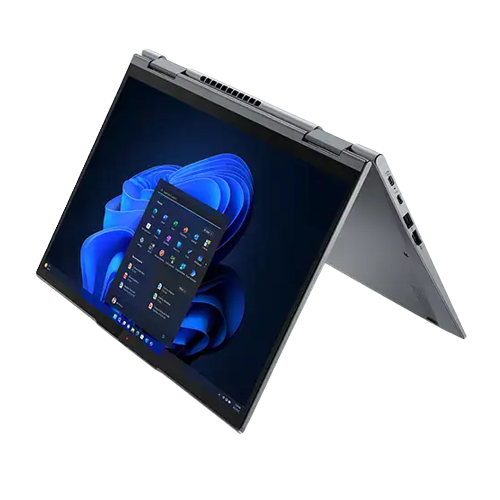
Lenovo ThinkPad X1 Yoga Gen 8
Perfect for remote working
The Lenovo ThinkPad X1 Yoga Gen 8 is an exciting update in its line, delivering improved processors on top of premium design and the business security features you expect from a ThinkPad.
- Latest 13th-generation Intel Core processors
- 4K OLED display option
- Included active stylus
- Only integrated graphics
- Expensive
We mentioned that 4G is often found on business laptops, and nobody makes notebooks for business users quite like Lenovo. Every generation of the ThinkPad X1 that we’ve tested has been great, and now it’s been upgraded to 13th-generation Intel processors with the ThinkPad X1 Yoga Gen 8. It's essentially a ThinkPad X1 Carbon in a 2-in-1 form factor and is well worth checking out.
Starting with the 13th-generation Intel Core processors, this convertible laptop can be customized with either efficient U-series or powerful P-series CPUs. The top two are the i7-1365U, with 10 cores, 12 threads, and a boost clock of 5.2GHz, and the i7-1370P, which has 14 cores and 20 threads with a maximum boost of 5.2GHz. Either range will give you enough power for productivity tasks, and you’re not losing out by picking the U-series chips. All options come with Intel Iris Xe integrated graphics, up to 64GB of RAM, and up to 2TB of PCIe 4.0 SSD storage.
All four 14-inch, 16:10 display options have multitouch with an integrated active stylus, as you’d expect from a convertible laptop. Two of the IPS options have an FHD+(1920x1200) resolution and 400 nits of brightness, with either anti-glare or anti-reflection coating. The last IPS option has the same resolution but 500 nits of brightness and a ThinkPad Privacy Guard. The premium display is a 4K+ (3840x2400) OLED with 500 nits of brightness, Dolby Vision, and DisplayHDR 400. As always, the OLED is the one to go for if you want the best picture quality.
You can opt for 4G LTE CAT16 or 5G cellular connectivity, and you get tons of ports for such a slim device. There are two Thunderbolt 4 ports, an HDMI 2.1 port, two USB-A 3.2 Gen 1, and a 3.5mm audio jack. Like its clamshell cousin, this is a very capable laptop with added versatility thanks to the convertible form factor.
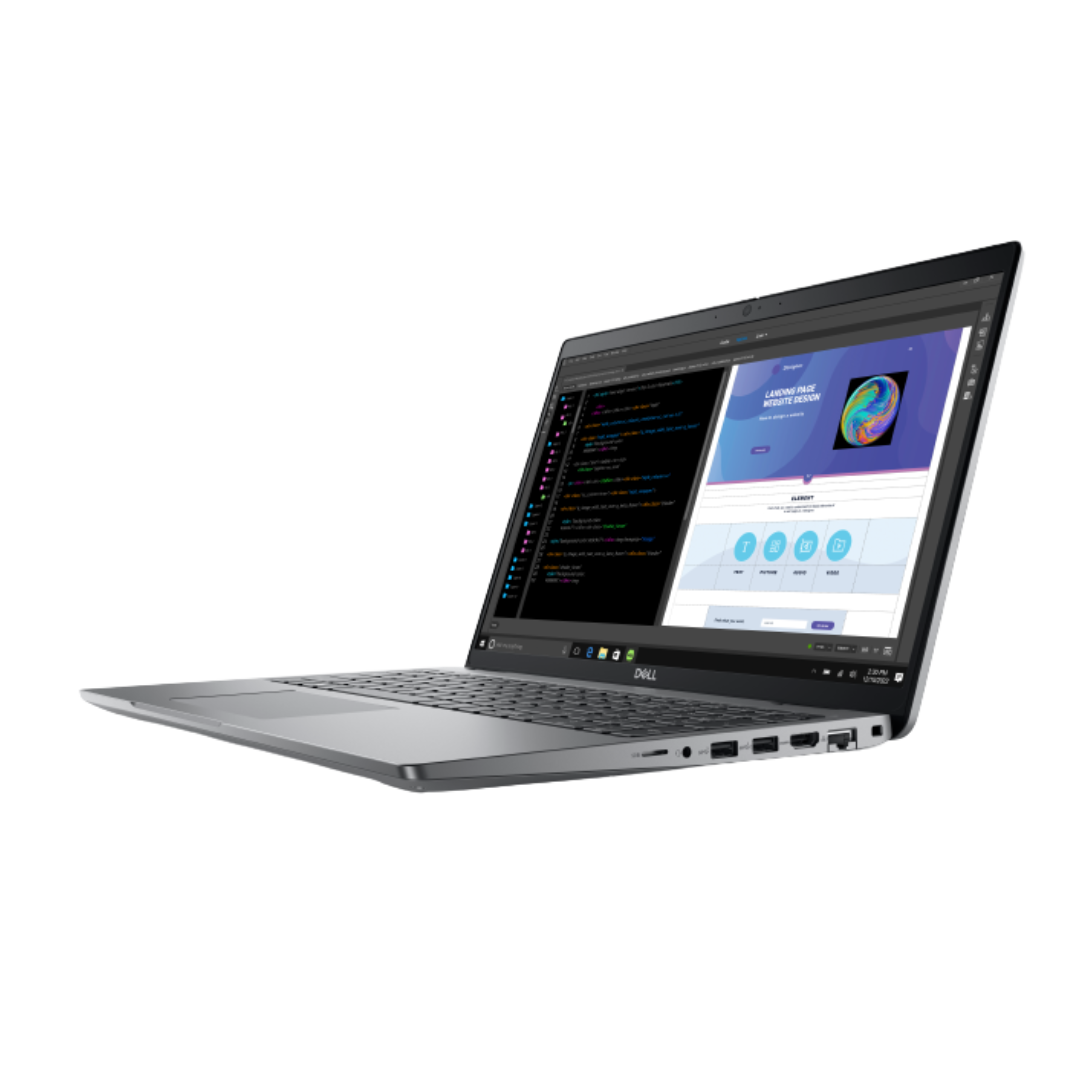
Dell Precision 3580
For when you need a little more power
The Dell Precision 3580 workstation is an extremely powerful business laptop with optional Nvidia discrete graphics and a choice of 4G LTE or 5G cellular connectivity.
- Plenty of options for upgrading
- Powerful 13th-generation Intel processors
- Two M.2 storage slots
- Heavy
- Expensive
Most of the devices on this list are light, thin, and portable. That’s fine if you don’t need extra power, but it limits the tasks you can get done away from your desk. The Dell Precision 3580 is a portable workstation, full of power, so you can get away from the office but still get any part of your workload done.
The selection of 13th-generation Intel Core processors goes up to an i7-1355U with 10 cores, 12 threads, and 5.0GHz turboboost, or an i7-1370P with 14 cores, 20 threads, and 5.20GHz turboboost. Base models have Intel Iris Xe graphics, or there’s optional Nvidia RTX A500 professional graphics with 4GB of GDDR6 if you get the 28W P-series CPUs. The portable workstation has up to 64GB of DDR4 or DDR5 memory and up to 3TB of PCIe 4.0 SSD split across two M.2 slots.
The 15.6-inch display has ten configuration options, although most differ depending on which webcam or WWAN options you choose. All are FHD(1920x1080) IPS panels running at 60Hz. Some are 250 nits in brightness, while a few others increase that to 400 nits. There is optional touch support and a choice of FHD + IR webcams or FHD + IR with walk-away detection.
It is huge compared to other options on this list (it starts at 3.56 pounds), but the larger form factor also allows for a robust port selection. Dell adds two Thunderbolt 4 ports, an SD card reader, a 3.5mm audio jack, two USB-A 3.2 Gen 1 ports, HDMI 2.0, and an RJ45 Ethernet port. The added power of this workstation means you’ll need to carry the charger around, especially if you opt for the discrete graphics option.
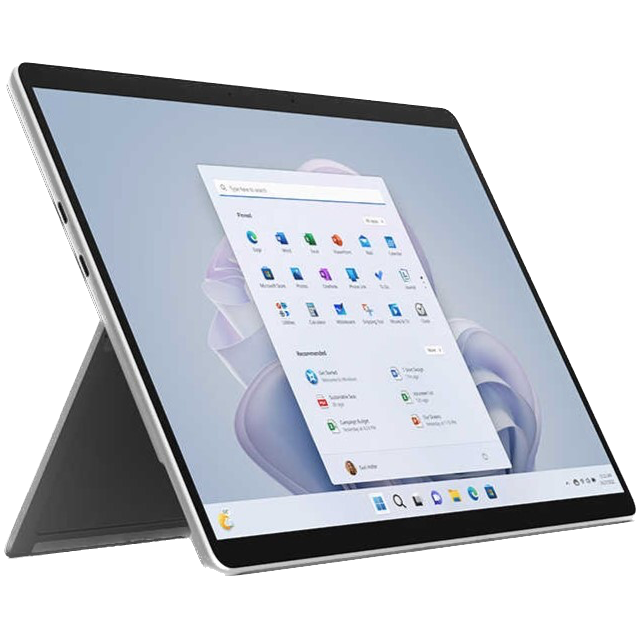
Surface Pro 9 5G
The ultimate choice in portability
The Surface Pro 9 is powered by the Microsoft SQ3 chipset, which is an Arm processor. That means great battery life, lots of connectivity options, and the tablet format is versatile for keeping you productive.
- The Slim Pen is great (but has to be bought seperately)
- Can run Android apps
- Replaces your laptop and iPad
- App selection for Windows on Arm is lacking
- Not powerful enough for video editing
The best tablet with LTE support also happens to be one of the most premium devices on the market. The Surface Pro 9 has a spot in the heart of many XDA staff, as it can replace both an iPad and a laptop in daily use. It’s powered by an Arm processor and runs Windows 11, but that also means it can run Android apps to fill in any software gaps.
The 13-inch display uses a 3:2 aspect ratio, which is pretty much the perfect choice for a device that can switch between productivity and content consumption in a heartbeat. It has a 2880x1920 resolution that runs at 120Hz for smooth onscreen animations, is multitouch, and supports the Surface Slim Pen 2. We tested the screen and found it covered 100% of sRGB, 78% NTSC, 82% Adobe RGB, and 85% P3. That’s better than many devices we’ve used, and it’s bright, too, tested at 447.1 nits.
The Microsoft SQ3 chipset is pretty powerful and paired with 16GB of LPDDR4x and 256GB of SSD, so there’s plenty of memory for multitasking and space to hold documents and apps. Battery life is insanely good, regularly breaking eight to 10.5 hours of battery life in our testing. That’s almost unheard of from a Windows 11 device, especially one that has a 120Hz display. The 5MP webcam is also a standout feature, with Windows Studio effects to make you look better, and also to keep you centered in the frame.
The Surface 9 Pro can be specced with optional 5G, which will fall back to LTE if that’s the better signal quality. The only real drawbacks are the lack of ports, as you get USB-C and the Surface Connect port, but no 3.5mm audio port, and the price which doesn’t include the two accessories you need to take full advantage of the device, the Slim Pen 2 and the Surface Keyboard.
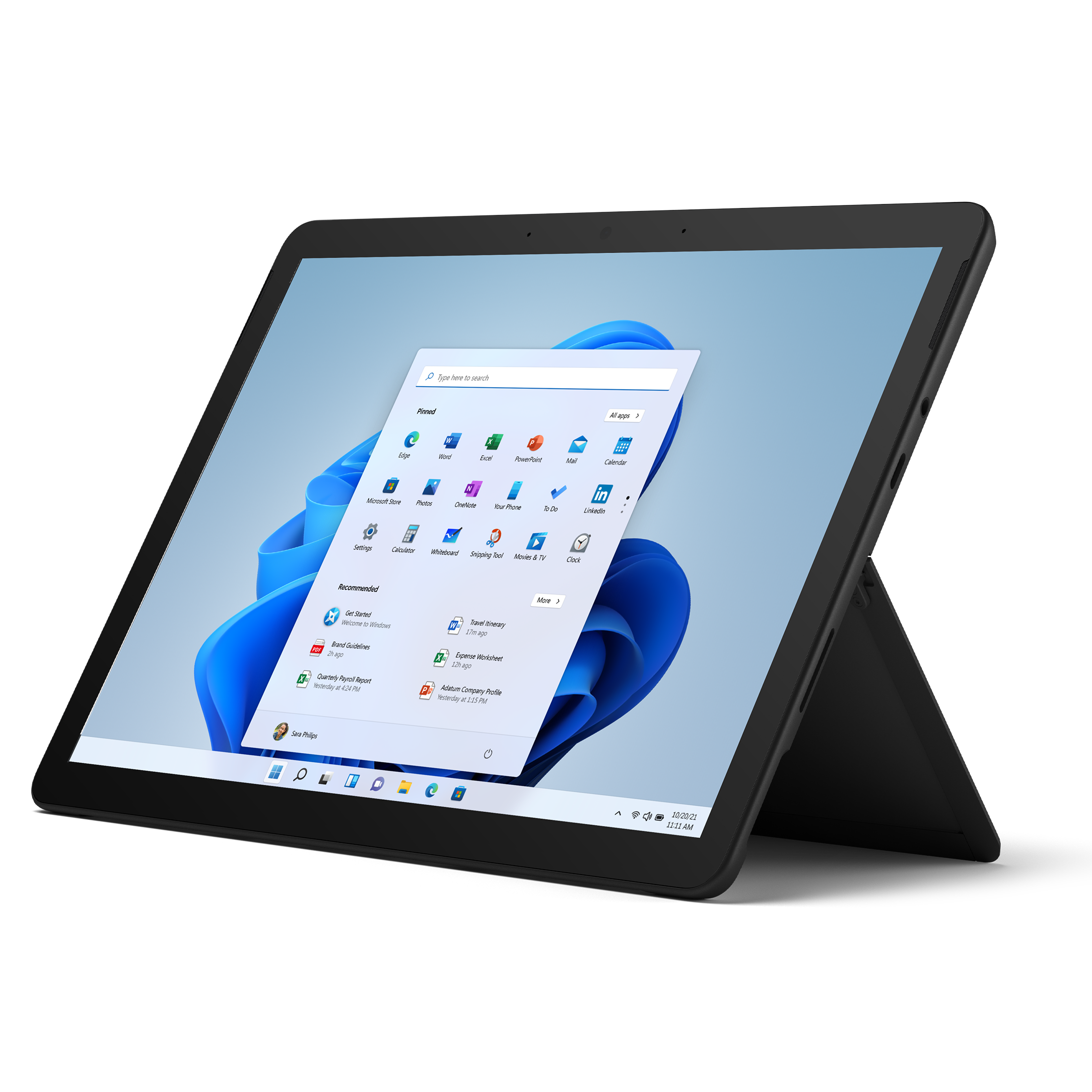
Microsoft Surface Go 3
4G doesn't have to cost the world
The Surface Go 3 is an affordable tablet that offers a premium experience in some ways you might not expect. It's also the lightest Surface yet.
- Affordable
- Runs Intel processors
- 3:2 aspect ratio touchscreen
- Low storage options
- Only one USB-C port
To connect to LTE and have a larger screen than your phone, the Surface Go 3 is worth checking out. Microsoft’s budget Surface is light, portable, and has a stylish design that fits the rest of the premium Surface devices. That means it comes with a magnesium alloy shell with a traditional Surface Platinum color. It looks much more expensive than it is and has a sturdy built-in kickstand that flips backward. The Surface Pen magnetically attaches to it, but as that stylus needs an AAA battery, it won’t charge like on premium tablets. Performance-wise, it’s powered by one of two 10th-generation Intel processors, a Core i3-10100Y or a Pentium Gold 6500Y. Neither of these chips will wow with speed, but they’re perfectly capable of productivity tasks or web browsing on the go. It either has 4GB of LPDDR3 and 64GB of eMMC storage on the Pentium or 8GB of LPDDR3 and 128GB of SSD on the Core i3. The i3 is the one to go for if you can, as the performance will be improved in every area.
The user experience is pretty good on either set of hardware. Microsoft has used the 3:2 aspect ratio for the screen, which matches the other Surface devices to provide a consistent UI. The screen has an FHD+(1920x1280) resolution, which is crisp on the 10.5-inch size. It supports multitouch and the Surface Pen, so mobile Windows 11 is easy to navigate. Oh, and the 5MP front-facing webcam with Windows Hello support is great and ahead of almost any Windows device of similar price. There’s also an 8MP camera on the back, with 1080p video recording. The LTE model is just over 1.2 pounds, making this one of the most portable devices on this list, even when adding the Surface Keyboard and Surface Pen to your bag. The downside of that is a lack of ports, with one USB-C port, a microSD card reader, the Surface Connect port, and a 3.5mm audio jack. Expect to use Bluetooth heavily for peripherals.
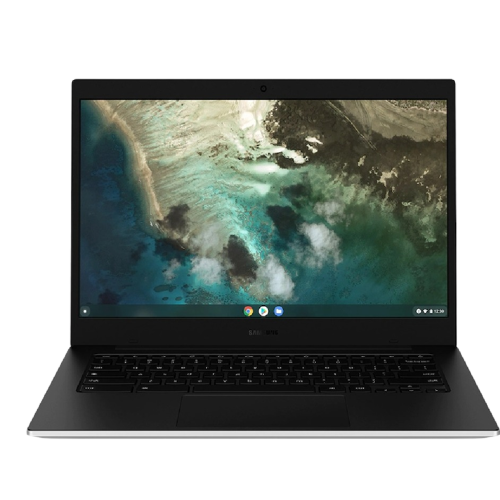
Samsung Galaxy Chromebook Go
Chromebooks are best when always-online
The Samsung Galaxy Chromebook Go is an affordable laptop with a stylish design and the option of LTE cellular connectivity for a smaller upcharge than on most notebooks.
- Affordable
- Durable design
- Works with all of the major carriers in the U.S.
- Low-end CPU
- Screen could be better
While most of the laptops on this list have price tags over $1,000, you don’t have to spend that much for 4G connectivity. The Samsung Galaxy Chromebook Go is one of our favorite Chromebooks, and being able to get it with LTE unlocked to all carriers for under $350 is amazing.
That’s the good news. To reach the price point, Samsung had to trim some things from the usual specifications. This Chromebook is powered by an Intel Celeron N4500, a lower-end CPU from the company that has a max boost of 2.80GHz. It’s paired with 4GB of RAM and uses 32GB or 64GB of eMMC storage. The low-end hardware doesn’t end there. The 14-inch, 16:9 screen isn’t FHD or higher, as you might expect in 2023. It’s only HD, meaning 1366x768 pixels, the resolution that laptops nearly a decade ago used to come with. It won’t win any awards for multitasking, but it can handle web browsing or basic productivity tasks. ChromeOS is optimized for use on low-power hardware, and that’s what we’ve got here.
The low power demands of these hardware choices mean better battery life, with Samsung saying it can last up to 12 hours on one charge. That means not needing to carry a charger around during the day, making the LTE connectivity even more portable.
The best 4G LTE laptop depends on what you need it for
While all of these laptops are great choices if you need 4G connectivity, the Lenovo ThinkPad X1 Carbon Gen 11 is the cream of the crop. It’s lightweight, durable, and powerful. You also get a full complement of ports (except for Ethernet), a rarity in the ultrabook form factor. And there’s a 2.8K OLED screen option, which is worth every penny if image quality is one of your primary concerns.
The HP Dragonfly Folio has a unique form factor that might be better for your needs if you use a stylus often. The pull-forward design is useful and eye-catching, and it’s clad in premium materials like leather. For the budget-conscious, 4G cellular modems drive the price up substantially, but the Samsung Galaxy Chromebook Go and Microsoft Surface Go 3 both manage to stay affordable while adding LTE connectivity.

Lenovo ThinkPad X1 Carbon Gen 11
The Lenovo ThinkPad X1 Carbon Gen 11 is a thin, light, and powerful business laptop with optional 4G and 5G connectivity. It's made from tough, durable materials, has a great webcam, and is a joy to type on.
You may have noticed some laptops on this list also offer options for 5G. If that's what you're after, we also have a roundup of the best 5G-enabled laptops you can look at.
